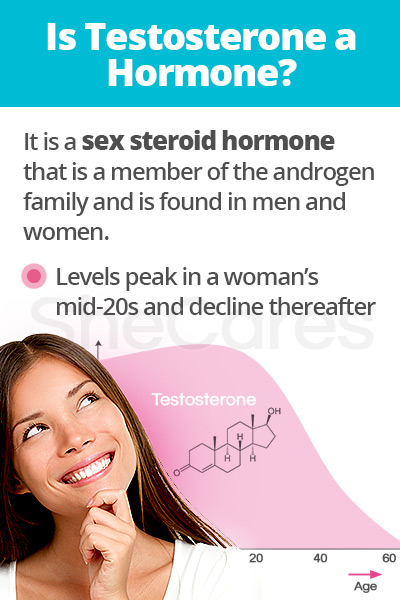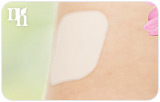Beyond question, testosterone is commonly considered an exclusively male hormone. However, both men and women produce testosterone. The difference between both genders lies in the quantity produced, with women believed to produce about a tenth the amount men do.
Continue reading to learn more about this ubiquitous sex hormone and its different types for a better understanding of its important nature.
What is Testosterone?

Testosterone Definition
Testosterone is a sex steroid hormone that is a member of the androgen family. It stimulates the development of characteristics such as a healthy libido, toned muscle mass, among other functions.
Women are believed to reach peak testosterone levels in their mid-20s. For each year afterwards, available testosterone declines one to two percent.
During menopause, levels are at half the peak level. This is mainly due to the decline in adrenal production. Although ovaries stop estrogen production, they continue to make testosterone.
Just like estrogen and progesterone, a testosterone imbalance can evoke problems with fecundity and menstruation since it is so intricately involved with a woman's reproductive life. For example, high levels of androgens like testosterone often cause infertility as well as masculine characteristics, such as facial hair and voice deepening.
Meaning of Testosterone
The origin of the word testosterone gave birth in the 1930s. The word comes from testis + -o- + -sterone (blend of sterol and ketone).
Types of Testosterone

There are two main types of testosterone: natural and synthetic.
Endogenous testosterone is naturally occurring. On the other hand, synthetic testosterone can be created from natural substances and synthesized pharmaceutically.
Natural
Steroidal hormones, such as endogenous testosterone, are lipids made from cholesterol. Steroidal hormones are mainly created in the adrenal glands and reproductive glands. They can penetrate and enter target cells to interact with receptors and directly influence the cell's behavior.
The steroidal androgen dehydroepiandrosterone (DHEA) is a main testosterone precursor, along with its metabolite dehydroepiandrosterone sulfate (DHEA-S) and androstenedione. About 50 percent of testosterone production in females is derived from these circulating androgen precursors in peripheral tissues. The other half happens by converting cholesterol to testosterone in the adrenal glands and ovaries.
In general, testosterone circulates throughout the body and is responsible for vitality, confidence, and a healthy sex drive. Because of this, many symptoms are evoked when ovaries are removed for a hysterectomy.
Synthetic
There are a number of ways to create synthetic testosterone in a laboratory. Synthetic versions can be found as testosterone undecanoate, testosterone propionate, or methyltestosterone, among others. Oftentimes, it is prescribed as patches, creams, lozenges, or sprays.
As one of the most common forms of synthetic testosterone, bioidentical testosterone is derived from plant phytosterols, including yams, and is chemically modified to be structurally identical to endogenous testosterone. These bioidentical hormones are then processed into creams, gels, and injections, among others.
Continue reading to gain valuable information about the process of testosterone production in glands and receptors to continue understanding how this hormone affects a woman's overall health.
Sources
- Arlt, W. (2006). Androgen therapy in women. European Journal of Endocrinology, 154, 1-11. doi: 10.1530/eje.1.02062
- Berman, J. & Berman, L. (2001). For Women Only: A Revolutionary Guide to Reclaiming Your Sex Life. London: Hachette Digital. Available from Google Books.
- Conrad, C. (2005). A Woman's Guide to Natural Hormones. New York: Penguin Group. Available from Google Books.
- Cirigliano, M. (2007). Bioidentical hormone therapy: a review of the evidence. Journal of Women's Health (2002), 16(5), 600-631. Retrieved June 13, 2018, from https://www.ncbi.nlm.nih.gov/pubmed/17627398
- Cleveland Clinic. (2014). Bioidentical Hormones. Retrieved June 13, 2018, from https://my.clevelandclinic.org/health/articles/15660-bioidentical-hormones
- Gottfried, S. (2013). The Hormone Cure. New York: Scribner.
- Kryger, A.H. (2004). Listen to Your Hormones. California: WellnessMD Publications. Available from Google Books.
- McMaster Pathophysiology Review. (n.d.). Sex Hormone Synthesis, Regulation, and Function. Retrieved June 13, 2018, from http://www.pathophys.org/sexhormones/
Merriam-Webster. (n.d.). Testosterone. Retrieved June 19, 2018, from https://www.merriam-webster.com/dictionary/testosterone - Sanderson, J.T. (2006). The Steroid Hormone Biosynthesis Pathway as a Target for Endocrine-Disrupting Chemicals. Toxicology Sciences, 94(1), 3-21. doi: https://doi.org/10.1093/toxsci/kfl051
- Society for Endocrinology. (2018). Testosterone. Retrieved June 13, 2018, from http://www.yourhormones.info/hormones/testosterone.aspx



